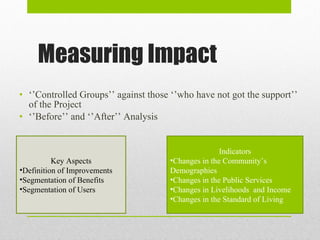Socioeconomic aspects refer to the social and economic characteristics, circumstances, and factors that shape and influence the lives and opportunities of individuals, communities, and societies. These aspects include factors such as income, education, occupation, social class, race and ethnicity, gender, age, geographic location, and access to resources and services.
Socioeconomic status (SES) is a term used to describe the social and economic position of an individual or group in relation to others within a society. SES is often measured by income, education, and occupation, and is used to understand patterns of inequality and social mobility within a society.
Socioeconomic factors can have a significant impact on an individual's health, well-being, and opportunities in life. For example, individuals with higher SES tend to have better access to education, healthcare, and other resources that can promote good health and well-being. They may also have more opportunities for employment and advancement, leading to higher levels of economic stability and security.
On the other hand, individuals with lower SES may face more challenges in terms of access to education, healthcare, and other resources. They may also have limited opportunities for employment and advancement, leading to higher levels of economic insecurity and vulnerability.
Socioeconomic inequality refers to the unequal distribution of resources, opportunities, and outcomes within a society based on factors such as income, education, and occupation. This inequality can have significant consequences for individuals and communities, as those with lower SES may be disadvantaged in terms of access to education, healthcare, and other resources that can promote health and well-being, as well as opportunities for employment and advancement.
Efforts to address socioeconomic inequality often involve policies and programs aimed at improving access to education, healthcare, and other resources for disadvantaged individuals and communities. These efforts can help to promote social and economic mobility and improve the overall well-being and opportunities of individuals and communities.
In conclusion, socioeconomic aspects refer to the social and economic characteristics, circumstances, and factors that shape and influence the lives and opportunities of individuals, communities, and societies. These aspects can have significant consequences for health, well-being, and opportunities, and addressing socioeconomic inequality through policies and programs can help to promote social and economic mobility and improve the overall well-being and opportunities of individuals and communities.








